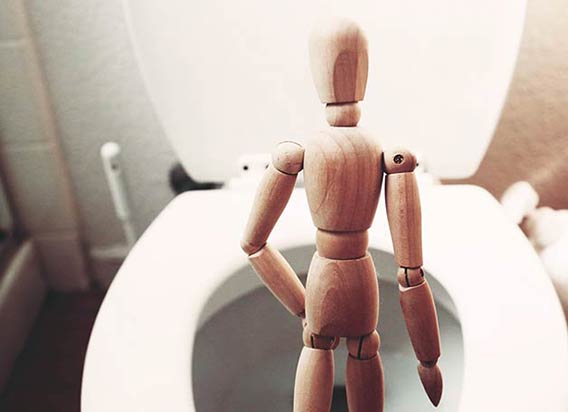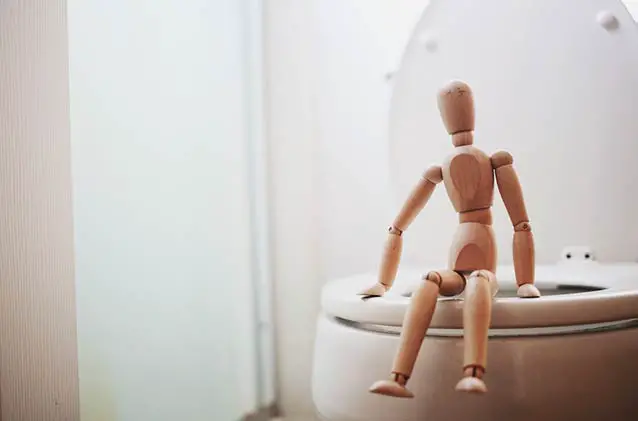There are many things to consider when choosing a head for your boat.
First and most importantly, a head needs to meet marine pollution regulations.
Secondly, it should be something that you can install and maintain fairly easily. It should be easy and comfortable to use, and it should be reasonably easy to empty and clean.
Other things you should take into consideration when choosing a head include whether you will be living on the boat, how much use the head will get, how many guests you need to accommodate at a time, and the location of your nearest pump-out facility.
So is a marine toilet or a composting toilet the better choice for your boat? Let’s break down the different types of boat toilets, and look at the pros and cons of each.
Contents
Marine Heads
Up until quite recently, marine heads were the de-facto solution for boating toilets. However, they are known to come with a host of difficulties, including leaky parts, the availability (or not) of legal places to dump the waste, and, of course, “head smell.”
There are three common types of marine head: the manual pump head, electric head, and vacu-flush head. They all work slightly differently, but in general, they use either fresh or saltwater to flush waste into a holding tank, which can then be emptied at a pump-out station or offshore.
Pros
When they are well-maintained and working correctly, marine heads are great. With a marine head, your waste is “out of sight, out of mind” because it’s stored in a holding tank at the bottom of the boat.
You deal with it at the pump-out station, or you pump it overboard (as long as you are in a place where it’s legal to do so.) Other reasons people like them include:
- feels like using a “regular” toilet
- non-sailing guests don’t find them gross
- pump-out is very easy when you’re offshore
Cons
The main issue with marine heads is that they need to be used frequently and maintained properly.
Depending on the type, there are many things that can potentially go wrong with a marine head. All of these things can be costly, time-consuming, and, frankly, gross to fix.
Common complaints about marine heads involve the following:
- odor
- leaky hoses or tank
- waste stuck in hoses
- broken pumps
- seized 12v motor
- some systems use freshwater that could be saved for other purposes
- if the pump is manual, guests may not use it correctly
Of all these issues, the odor is listed first because it’s the most common complaint. Marine head odor is so notorious in the boating community that people have written books about how to prevent your head from smelling.
Marine heads smell because the liquid and solid waste get mixed together inside the hoses and holding tank, creating sewage. Sewage often gets stuck in the hoses, valves, and joints on its way to the tank. Then the smell leeches through the hoses and into the rest of the boat.
Marine head systems are also known for being finicky and complicated, with specialized parts that need to be replaced regularly.
Composting Heads
Composting toilets have been around for ages, but they are fairly new to the boating scene. Despite their newness, they’re making waves as a simpler, cleaner, and less smelly solution to traditional marine heads.
That being said, a composting toilet isn’t for everyone. They require you to be much more “hands-on” with your waste and depending on the amount of use the head gets, it might need to be emptied more frequently than a marine toilet.
Composting heads work by separating solid waste and liquid waste in two compartments. The liquid waste tank is a unit on the front of the head that can be removed and dumped overboard. The solids tank is a bucket that gets filled with a composting material like coco coir. Solid waste enters the bucket via a trap door, where it dries out and turns into compost over a period of weeks.
Pros
People like composting heads because they are so simple. They require virtually no maintenance and there is very little about them that can break or go wrong.
Composting toilets don’t require hoses, through-hulls, or holding tanks, so they take up less space than a regular marine head. They don’t require any electricity or pumps. They are very easy to maintain and never need servicing or extensive cleaning. Other reasons people like them include:
- environmentally friendly (never require chemical treatments)
- solids tank can be left full for months without odor
- it can handle some things a marine toilet can’t (vomit, feminine products)
- never need to worry about finding a pump-out station
Cons
A composting toilet is certainly simpler than a marine head, but it’s also very different from a regular toilet.
The liquids tank needs to be emptied frequently, and if solids are not completely composted when it comes time to empty the tank…it can be pretty gross.
Other common complaints include:
- more expensive than a marine head
- if not properly maintained, the tank can attract flies
- not at all like using a regular toilet
- non-sailing guests might be grossed out by it
- liquids tank is not big enough if you have a large number of guests
- if your setup includes a 12v fan, the fan can break
Of all the common complaints about composting toilets, the main issue is the size of the liquids tank. Since it is quite small, it needs to be emptied very frequently or it will overflow. If you live aboard, you’ll find yourself emptying it almost every day.
As far as cost goes, you make up for the initial expense of the composting toilet by not having to purchase replacement parts down the road.
Which Is the Winner?
I should preface this section by saying that I am a true believer in the composting toilet.
I replaced the old marine head on our Morgan 43 with an Airhead three years ago, and I will never go back. I’ve never been on a boat that didn’t smell at least a little bit. Our boat doesn’t smell at all.
Dumping the solids tank is obviously not the most fun I’ve ever had, but it’s not the worst thing in the world either. You can easily put a contractor bag over the open solids tank, and then just turn the tank upside down into the bag and shake out the contents.
You don’t have to do any more than that, because anything that’s left in the tank will continue to compost with the next batch.

So far, we haven’t had issues with guests finding it gross. The other great thing about using it with guests is that the system won’t break if they put things in the toilet that aren’t supposed to be there.
It hasn’t been all sunshine and roses though. We’ve had issues with the 12v fan that pulls odor and moisture out of the solids tank. I’ve also been frustrated by leaks that have happened when I forgot to empty the liquids tank and it overflowed.
Final Word
A composting head isn’t for everyone. If you’re not comfortable being “hands-on” with your waste once in a while, or you don’t think your guests will be comfortable using it, stick with a marine head. Some of the best options out there include the Jabsco Twist ‘n Lock and Jabsco Compact Electric Toilet.
However, if you’re put off by the smell, or the constant maintenance that a marine head requires, or you’re afraid that something might go wrong that you’re unable or unwilling to fix, a composting head is an excellent solution. Check out the Airhead or Nature’s Head.






